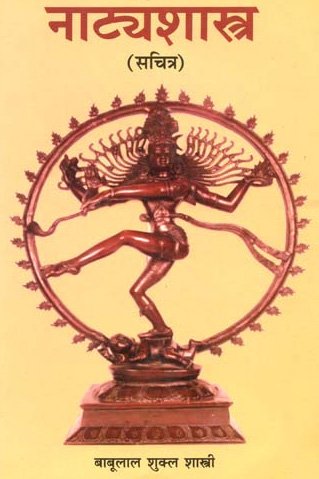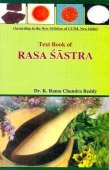Avapa, Āvāpa: 17 definitions
Introduction:
Avapa means something in Hinduism, Sanskrit, Buddhism, Pali, Marathi. If you want to know the exact meaning, history, etymology or English translation of this term then check out the descriptions on this page. Add your comment or reference to a book if you want to contribute to this summary article.
In Hinduism
Natyashastra (theatrics and dramaturgy)
Source: Wisdom Library: Nāṭya-śāstraĀvāpa (आवाप) refers to one of the twenty aspects of tāla (time-measure), according to the Nāṭyaśāstrahapter chapter 28. In musical performance, tāla refers to any rhythmic beat or strike that measures musical time. It is an important concept in ancient Indian musical theory (gāndharvaśāstra) traceable to the Vedic era.
According to the Nāṭyaśāstra chapter 31, āvāpa is one of the four varieties of the silent tāla. Accordingly, “the āvāpa is the curving of fingers pointing upwards”, and “after showing the āvāpa (lit. the curving the fingers) one should be making the niṣkrāma and then the vikṣepa and next the praveśana (praveśa)”. The tāla is so called because it measures time by a division of songs into kalās”.

Natyashastra (नाट्यशास्त्र, nāṭyaśāstra) refers to both the ancient Indian tradition (shastra) of performing arts, (natya—theatrics, drama, dance, music), as well as the name of a Sanskrit work dealing with these subjects. It also teaches the rules for composing Dramatic plays (nataka), construction and performance of Theater, and Poetic works (kavya).
Ayurveda (science of life)
Kalpa (Formulas, Drug prescriptions and other Medicinal preparations)
Source: Shodhganga: Edition translation and critical study of yogasarasamgrahaĀvāpa (आवाप, “paste”) is another name for Kalka, a Sanskrit technical term appearing in the 15th-century Yogasārasaṅgraha (Yogasara-saṅgraha) by Vāsudeva..—Kalka (“paste”) is also known as praseka and āvāpa. It is obtained by grinding drugs with water, if necessary.
Unclassified Ayurveda definitions
Source: gurumukhi.ru: Ayurveda glossary of termsĀvāpa (आवाप):—A process in which the powdered material has to be sprinkled into the molten material

Āyurveda (आयुर्वेद, ayurveda) is a branch of Indian science dealing with medicine, herbalism, taxology, anatomy, surgery, alchemy and related topics. Traditional practice of Āyurveda in ancient India dates back to at least the first millenium BC. Literature is commonly written in Sanskrit using various poetic metres.
Languages of India and abroad
Pali-English dictionary
Source: BuddhaSasana: Concise Pali-English Dictionaryāvāpa : (m.) potter's furnace; an oven.
Source: Sutta: The Pali Text Society's Pali-English DictionaryĀvāpa, (if correct, fr. ā + vā2 to blow with caus. p.—Cp. J R A S. 1898, 750 sp. ) a potter’s furnace DhA. I, 177 (read for āvāsa?), 178. (Page 112)

Pali is the language of the Tipiṭaka, which is the sacred canon of Theravāda Buddhism and contains much of the Buddha’s speech. Closeley related to Sanskrit, both languages are used interchangeably between religions.
Marathi-English dictionary
Source: DDSA: The Molesworth Marathi and English Dictionaryāvāpa (आवाप).—m S Sowing. In comp. as dhānyāvāpa, bījāvāpa, kṣētrāvāpa.
Source: DDSA: The Aryabhusan school dictionary, Marathi-Englishāvāpa (आवाप).—m Sowing.
Marathi is an Indo-European language having over 70 million native speakers people in (predominantly) Maharashtra India. Marathi, like many other Indo-Aryan languages, evolved from early forms of Prakrit, which itself is a subset of Sanskrit, one of the most ancient languages of the world.
Sanskrit dictionary
Source: DDSA: The practical Sanskrit-English dictionaryĀvāpa (आवाप).—a. [āvap-ghañ] Throwing, scattering. (as in akṣāvāpa q. v.).
-paḥ 1 Sowing seed.
2) Scattering, throwing in general; casting, directing.
3) Mixing, inserting.
4) Especially, throwing additional ingredients into a compound in course of preparation.
5) A basin for water round the root of a tree (ālavāla).
6) A vessel, jar for corn.
7) Setting out or arranging vessels.
8) Hostile purpose, intention of fighting (with another); foreign affairs; 'तन्त्रः स्वराङ्कचिन्तायामा- वापः परचिन्तने इति वैजयन्ती (tantraḥ svarāṅkacintāyāmā- vāpaḥ paracintane iti vaijayantī); तन्त्रावापविद् (tantrāvāpavid) Śiśupālavadha 2.88.
9) A principal sacrifice or oblation to fire.
1) A kind of drink.
11) A bracelet (āvāpaka).
12) Uneven ground.
13) Decentralisation, a matter which serves several persons or things only if repeated with each one of them (opp. tantra q. v.) यस्तु आवृत्त्या उपकरोति स आवापः । यथा तेषामेव ब्राह्मणानामनुलेपनम् (yastu āvṛttyā upakaroti sa āvāpaḥ | yathā teṣāmeva brāhmaṇānāmanulepanam) | ŚB. on MS.11.1.1.
Source: Cologne Digital Sanskrit Dictionaries: Shabda-Sagara Sanskrit-English DictionaryĀvāpa (आवाप).—m.
(-paḥ) 1. A basin for water round the root of a tree. 2. A bracelet. 3. Hostile purpose, intention of going to war, (as a king.) 4. Throwing, casting, directing. 5. Sowing seed. 6. Throwing additional ingredients into any compound, (in pharmacy, &c.) in course of preparation. 7. Mixing, inserting. 8. Uneven ground. 9. A vessel. 10. Principal sacrifice with fire. E. āṅ, vap to sow, ghañ aff.
Source: Cologne Digital Sanskrit Dictionaries: Benfey Sanskrit-English DictionaryĀvāpa (आवाप).—i. e. ā-vap + a, m. 1. An arm-guard, [Rāmāyaṇa] 6, 92, 15. 2. Watching the enemies, [Śiśupālavadha] 2, 88.
Source: Cologne Digital Sanskrit Dictionaries: Cappeller Sanskrit-English DictionaryĀvāpa (आवाप).—[masculine] scattering, sowing, mixing, inserting, adding; receptacle, vessel; also = hastāvāpa q.v.
Source: Cologne Digital Sanskrit Dictionaries: Monier-Williams Sanskrit-English Dictionary1) Avāpa (अवाप):—[from avāp] mfn. See dur-avāpa.
2) Āvāpa (आवाप):—[=ā-vāpa] [from ā-vap] a m. scattering, throwing
3) [v.s. ...] sowing seed, [Mahābhārata] [commentator or commentary] on [Yājñavalkya]
4) [v.s. ...] insertion, [Śulba-sūtra]
5) [v.s. ...] casting, directing
6) [v.s. ...] (in med.) throwing additional ingredients into any mixture in course of preparation
7) [v.s. ...] mixing, inserting
8) [v.s. ...] setting out or arranging vessels, jars, etc., [cf. Lexicographers, esp. such as amarasiṃha, halāyudha, hemacandra, etc.]
9) [v.s. ...] a kind of drink, [cf. Lexicographers, esp. such as amarasiṃha, halāyudha, hemacandra, etc.]
10) [v.s. ...] a bracelet, [cf. Lexicographers, esp. such as amarasiṃha, halāyudha, hemacandra, etc.]
11) [v.s. ...] a basin for water round the root of a tree, [cf. Lexicographers, esp. such as amarasiṃha, halāyudha, hemacandra, etc.]
12) [v.s. ...] uneven ground, [cf. Lexicographers, esp. such as amarasiṃha, halāyudha, hemacandra, etc.]
13) [v.s. ...] hostile purpose, intention of going to war, [Sāhitya-darpaṇa; Śiśupāla-vadha] etc.
14) [v.s. ...] a vessel
15) [v.s. ...] principal oblation to fire, [Gobhila-śrāddha-kalpa]
16) [v.s. ...] a receptacle (cf. vyasanāv°).
17) [=ā-vāpa] b etc. See ā-√vap.
Source: Cologne Digital Sanskrit Dictionaries: Yates Sanskrit-English DictionaryĀvāpa (आवाप):—[ā-vāpa] (paḥ) 1. m. A basin for water at the root of a tree; a bracelet; sowing; hostile purpose; a vessel; a sacrifice by fire.
Source: DDSA: Paia-sadda-mahannavo; a comprehensive Prakrit Hindi dictionary (S)Avāpa (अवाप) in the Sanskrit language is related to the Prakrit words: Avāva, Āvāya.
[Sanskrit to German]
Sanskrit, also spelled संस्कृतम् (saṃskṛtam), is an ancient language of India commonly seen as the grandmother of the Indo-European language family (even English!). Closely allied with Prakrit and Pali, Sanskrit is more exhaustive in both grammar and terms and has the most extensive collection of literature in the world, greatly surpassing its sister-languages Greek and Latin.
Kannada-English dictionary
Source: Alar: Kannada-English corpusĀvāpa (ಆವಾಪ):—
1) [noun] the act of sowing seeds in the ground.
2) [noun] a basin or trench round the root of a tree for water.
3) [noun] an ornamental band or chain worn about the wrist; a bracelet.
Kannada is a Dravidian language (as opposed to the Indo-European language family) mainly spoken in the southwestern region of India.
See also (Relevant definitions)
Starts with (+15): Avapad, Avapada, Avapadana, Avapaka, Avapakasati, Avapakka, Avapakya, Avapalita, Avapam, Avapana, Avapani, Avapanishkira, Avapanna, Avapantaka, Avapantika, Avapash, Avapashita, Avapasika, Avapasthana, Avapat.
Ends with (+23): Adhavapa, Adhyavapa, Agavapa, Akshavapa, Anavapa, Anvavapa, Anyavapa, Aparavapa, Baijavapa, Bijavapa, Davapa, Dronavapa, Duravapa, Grihitasharavapa, Hastavapa, Kalasikavapa, Kashemavapa, Keshavapa, Khandukavapa, Kharikavapa.
Full-text (+13): Duravapa, Sharavapa, Akshavapa, Avapam, Avapaka, Avasa, Adhyavapa, Avala, Avaptavat, Apavap, Nititantra, Avava, Samavapa, Yogavapa, Avapika, Vyasanavapa, Kalka, Avaya, Praseka, Shararopa.
Relevant text
Search found 17 books and stories containing Avapa, A-vapa, Ā-vāpa, Āvāpa, Avāpa; (plurals include: Avapas, vapas, vāpas, Āvāpas, Avāpas). You can also click to the full overview containing English textual excerpts. Below are direct links for the most relevant articles:
Amarakoshodghatana of Kshirasvamin (study) (by A. Yamuna Devi)
Tāla (beat) or Measure of time < [Chapter 4 - Cultural Aspects]
Economics (5): Means of Transportation < [Chapter 3 - Social Aspects]
Sankhayana-grihya-sutra (by Hermann Oldenberg)
Mimamsa interpretation of Vedic Injunctions (Vidhi) (by Shreebas Debnath)
Chapter 9.1 - Classification of Parisaṃkhyāvidhi
Chapter 2.5 - Mīmāṃsaka’s conclusion on the meaning of ‘Liṅ’
Garga Samhita (English) (by Danavir Goswami)
Verse 1.7.37 < [Chapter 7 - Description of the Conquest of All Directions]
Verse 2.12.26 < [Chapter 12 - Subduing Kāliya and Drinking the Forest Fire]
Verse 1.15.3 < [Chapter 15 - Revelation of the Universal Form to Nanda’s Wife]
Sahitya-kaumudi by Baladeva Vidyabhushana (by Gaurapada Dāsa)
Text 2.6 < [Chapter 2 - The Natures of Words (śabda)]
Mahabharata (English) (by Kisari Mohan Ganguli)
Section XLII < [Goharana Parva]
Related products
